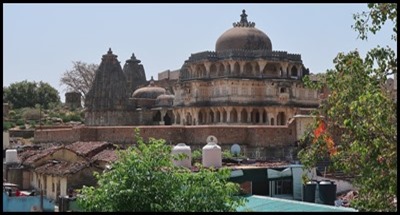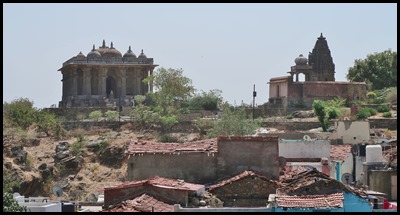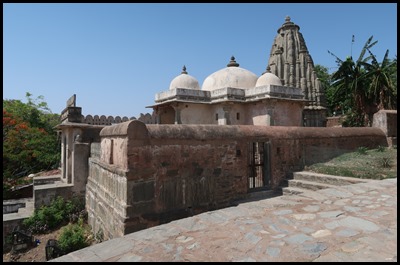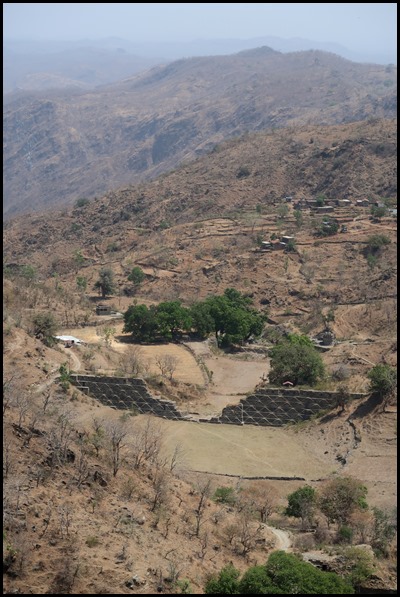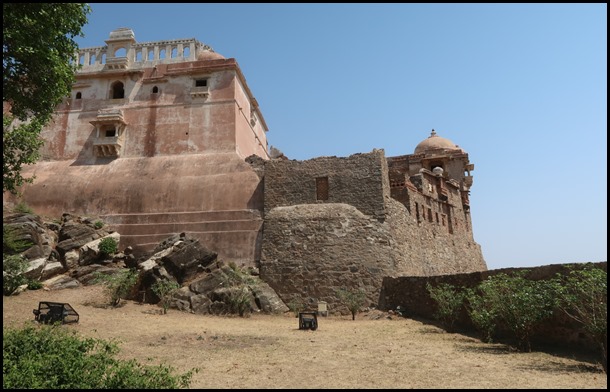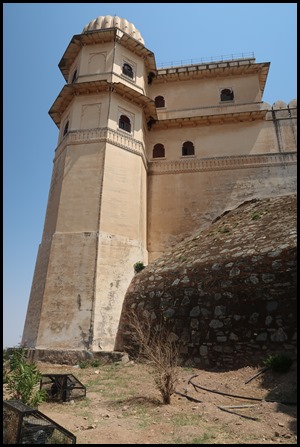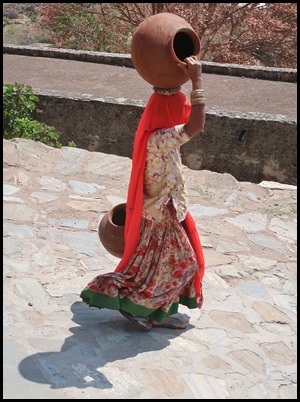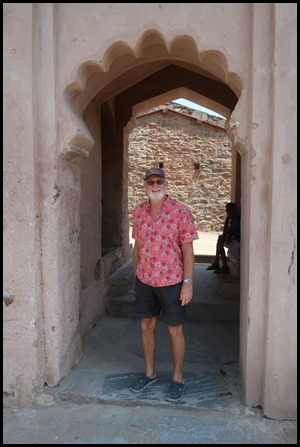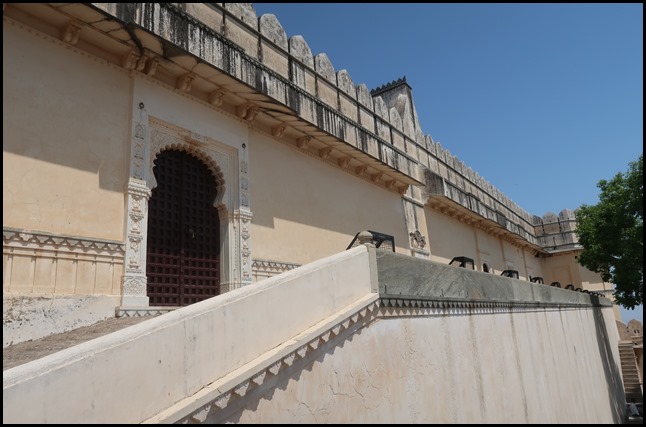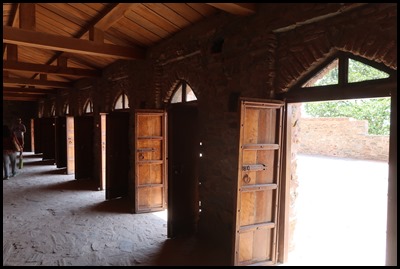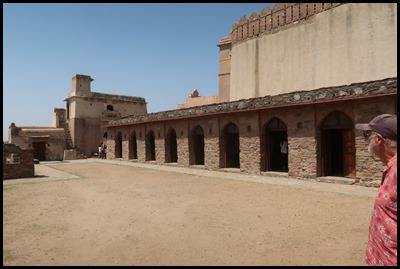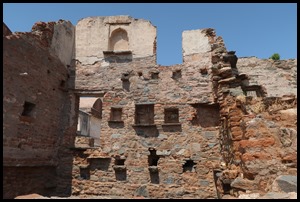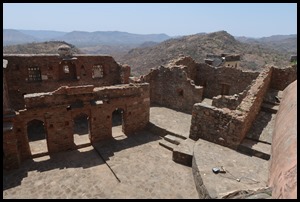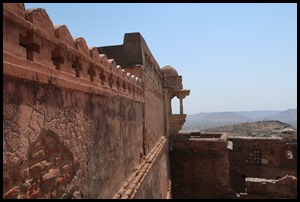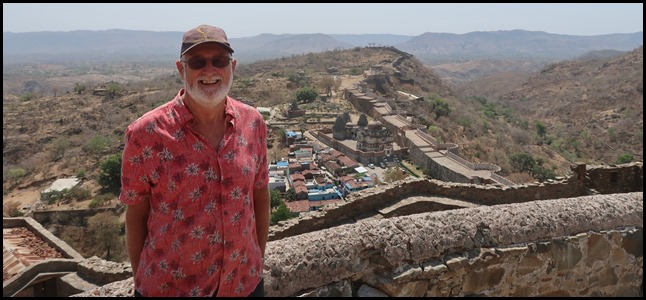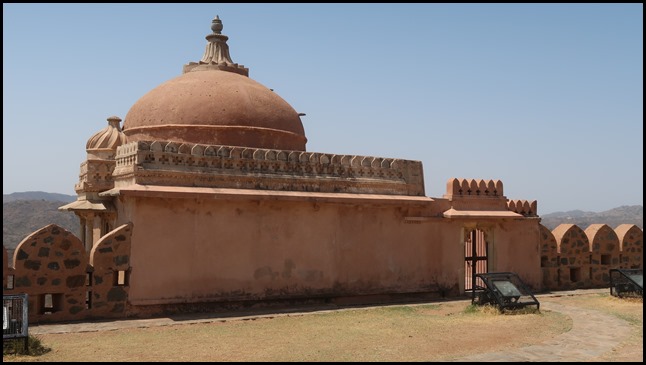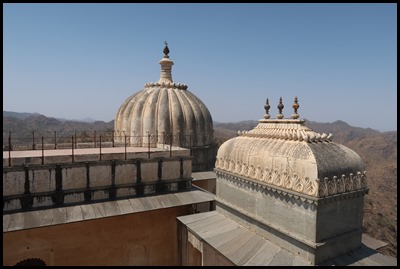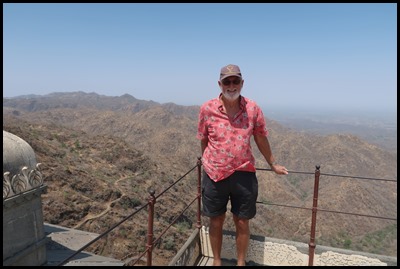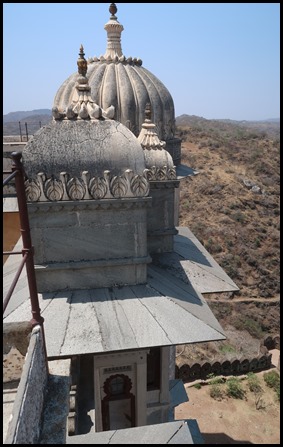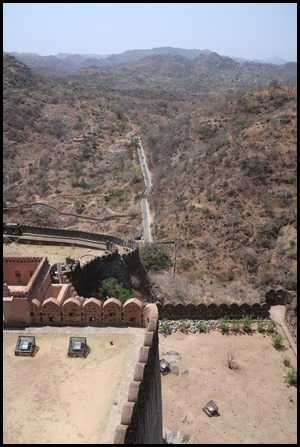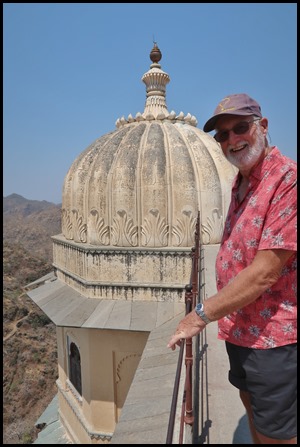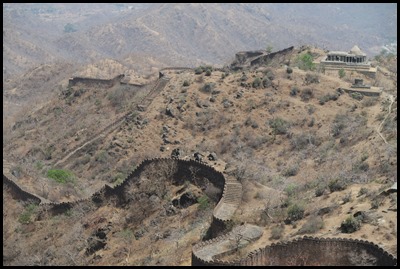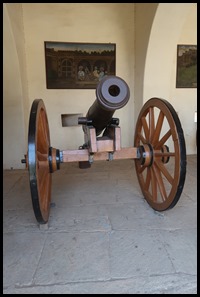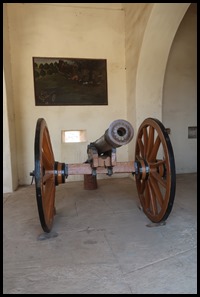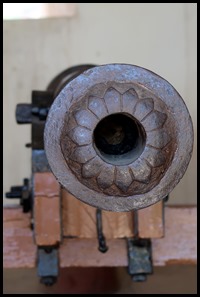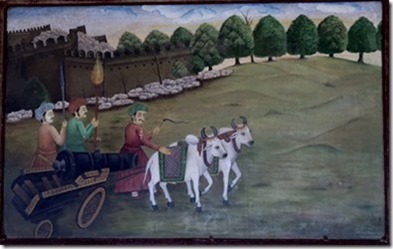Kumbhalgarh Fort

|
Kumbhalgarh
Fort  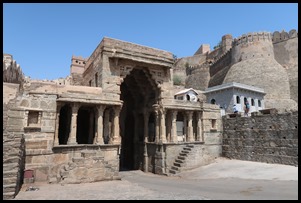 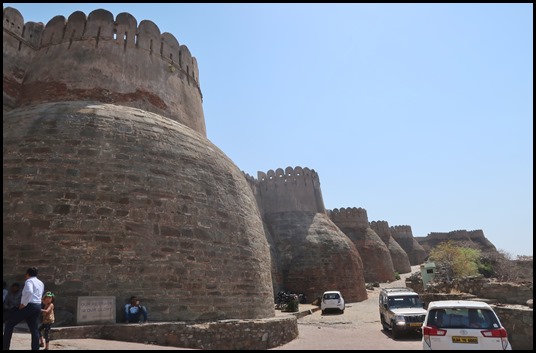 As soon as we approached the outer
gate, the inner
guardhouse and took in the mammoth wall, we
knew this was going to be some visit.
 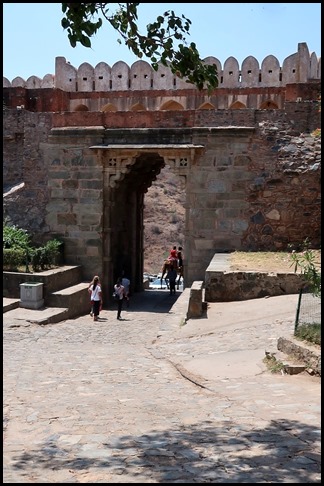 In through the Ram Pol and looking back at this tall gate.
The Kumbhalgarh Fort lies on a
hilltop which is 1100 meters above sea level. The gate of the striking fort is
humongous and known as Ram Gate or Ram Pol. The fort comprises of around seven
gates and a total of 360 temples within, 300 of which are ancient Jain while the
others are Hindu. There is a temple dedicated to Lord Shiva inside which
showcases a huge Shivalinga. One can also get a pretty view of the dunes in the
Thar Desert from the fort.
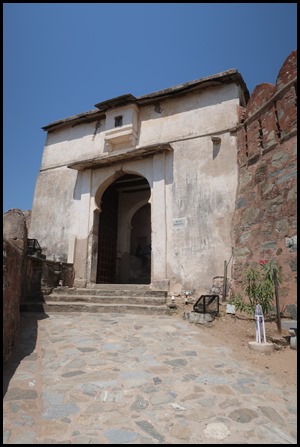 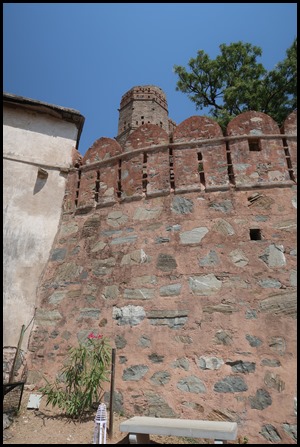 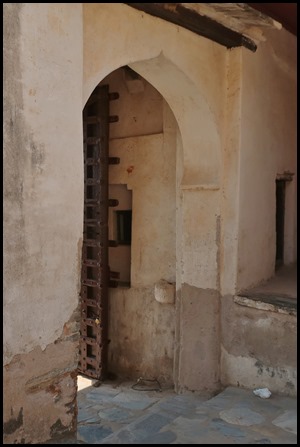 We bimbled up a steep rise to Bhairav Pol,
equally stout wall and from the inner side.
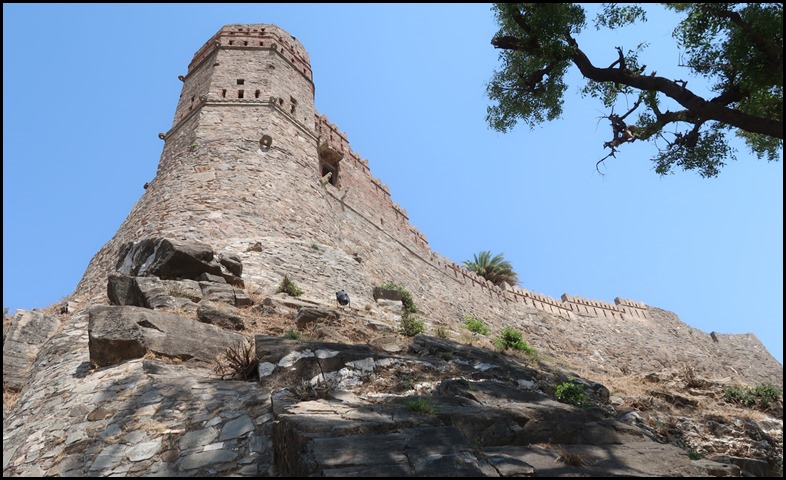 Looking up at Kumbhalgarh
Fort: it is one of the five hill forts of Rajasthan that were
declared the UNESCO world heritage site in 2013. Constructed on the foothills of
Aravalli ranges, it is surrounded by thirteen hill peaks of the ranges and is
perched at an elevation of 1,914 m. The magnificent fort is situated in the
middle of a forest which has been turned into a wildlife sanctuary. It is the
second largest and the most important Mewar fort of Rajasthan after Chittorgarh
palace.
Under the reign of Mewar kings in Rajasthan, the majestic fort was built by Rana Kumbha in the 15th century between AD 1443 and 1458 under the direction of Mandan who was a very renowned architect of that time. The fort was constructed in the exact same place where an old castle existed which was attributed to Samprati who was a Jaina prince of the second century BC. It is named after the King Kumbha. The Kumbhalgarh fort was cleverly designed on a hilltop to provide the strategic position to the Mewar kings to protect them against the attacks of the enemy which is why it is also recognized as the second most important fort of Rajasthan. 
......and some close by.
History of Kumbhalgarh Fort: There is a story behind this striking fort according to which when Rana Kumbha began constructing the fort, he came across several difficulties after which he thought of giving up on the construction. One day, he met a holy man who advised him not to give up hope and that one day all his problems would vanish away provided a pure-hearted man sacrificed his life willingly. Hearing this, the king got disappointed after which the holy man offered his own life to the king. He told the king to build the entrance of the Kumbhalgarh Fort where he was going to get beheaded and palaces where all his body would fall. Following his advice, Rana Kumbha did exactly what was told to him and succeeded in building the majestic fort.
|
